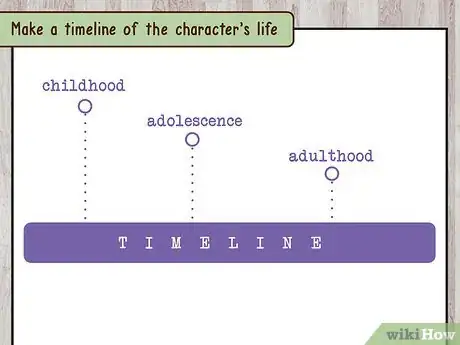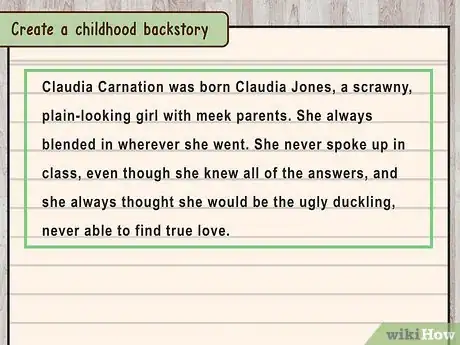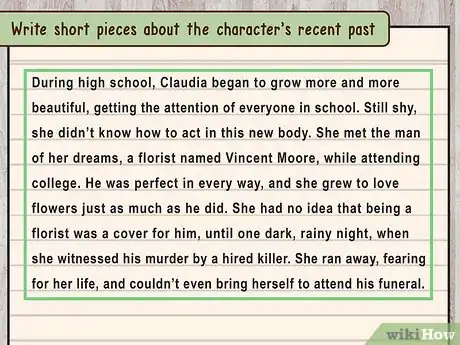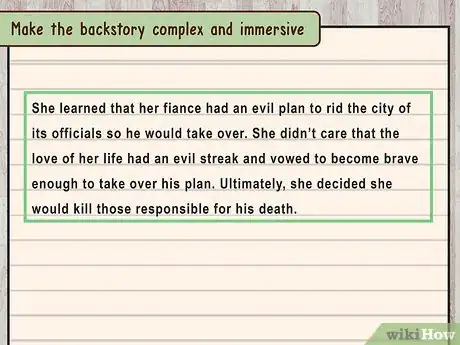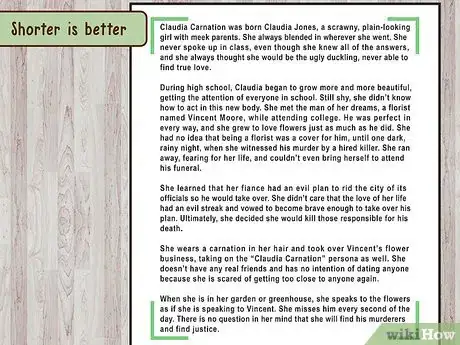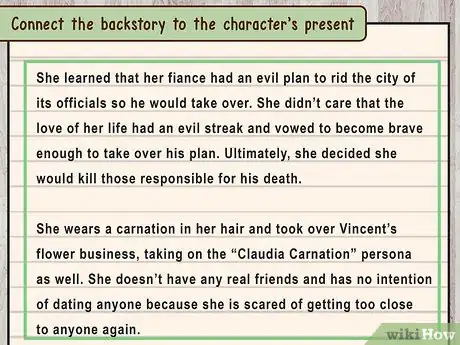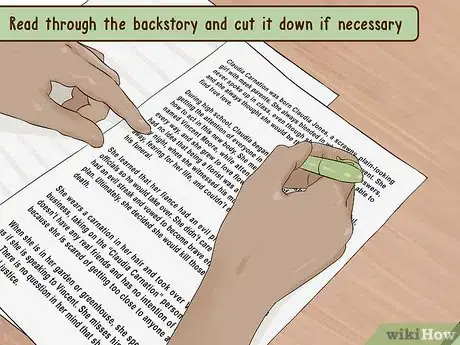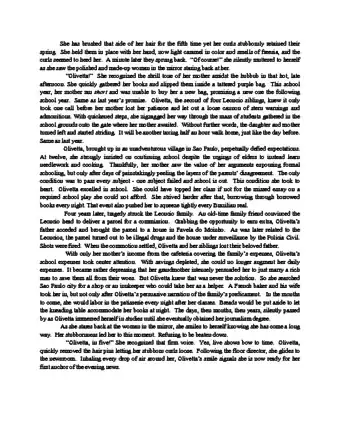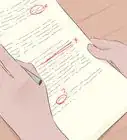This article was co-authored by Grant Faulkner, MA. Grant Faulkner is the Executive Director of National Novel Writing Month (NaNoWriMo) and the co-founder of 100 Word Story, a literary magazine. Grant has published two books on writing and has been published in The New York Times and Writer’s Digest. He co-hosts Write-minded, a weekly podcast on writing and publishing, and has a M.A. in Creative Writing from San Francisco State University.
wikiHow marks an article as reader-approved once it receives enough positive feedback. In this case, 84% of readers who voted found the article helpful, earning it our reader-approved status.
This article has been viewed 160,979 times.
In a narrative, the backstory should set up and explain who your character is now. Writing a strong backstory for a character can be tricky, especially if you want to avoid dumping information about the past into your narrative. To write a backstory, start by making a timeline of your character’s life and then choose defining moments in the character’s life to explore further. You should then polish the backstory so it fits seamlessly into your narrative and reveals character effectively.
Steps
Brainstorming Ideas for a Backstory
-
1Identify the purpose of a backstory in your story. Start by asking yourself, “Why am I writing a backstory for this character?” “What purpose will the backstory serve in my main story?” Consider how the backstory will deepen your character and strengthen your narrative. Identify what you want the backstory to do in your main story. This will help you start the backstory with purpose and intent.[1]
- For example, you may want the backstory to reveal a character’s haunted past and help to explain why a character is so damaged in the present. Or you may want the backstory to show the character’s complicated relationship with their father, who has just passed away in the present.
-
2Make a timeline of the character’s life. To help you get started on the backstory, sit down and outline a brief timeline of the character’s life. Begin from their childhood to their present. Draw a line indicating their life span and break it into sections for “childhood,” “adolescence,” and “adulthood.” You can then briefly plot key experiences or moments of the character’s life on the timeline.[2]
- If you are writing about a character who is a teenager, you may only have childhood and adolescence sections on the timeline. If you are writing from a child’s perspective, you may only have a childhood section, broken into smaller parts.
Advertisement -
3Read examples of a backstory. To help you get a better sense of what makes a good backstory, read examples of a backstory in literature. Most popular novels will have a backstory woven into the narrative. Many short stories will also contain a backstory throughout or broken into sections that go from the present to the past.[3]
- Examples of a backstory in writing include Anna Karenina by Leo Tolstoy, "Tiny Smiling Daddy" by Mary Gaitskill, and Moby Dick by Herman Melville.
- Go through your favorite stories and identify where a backstory is placed in the narrative. Notice how long the backstory is in the narrative and how it is woven into current events in the story.
- Often you can identify the backstory in your favorite stories by a shift from the present tense to the past tense. There may also be an indicative clause at the beginning of the backstory like “When I was a child…” or “As a young girl…”.
Creating a Draft of the Backstory
-
1Create a childhood backstory. Begin at the beginning of the character’s life. Create a backstory that includes key moments from the character’s childhood. Pick specific moments and events from childhood that are particular to the character. The childhood backstory should include experiences that are defining and significant to the character.[4]
- For example, if your character is struggling with their relationship with their father in the present of the main story, you may write a backstory that includes childhood memories with the character’s father. The backstory may show how damaging the character’s childhood was because of their father.
-
2Write short pieces about the character’s recent past. If you do not want to go all the way back to childhood, you can write short pieces about events that happened before the character’s present in the story. Create short pieces that focus on key moments or events in the character’s recent past. Think about how the character’s past interacts with the present as you write these short sections or pieces.[5]
- For example, if you have a main character who is depressed and anxious with their partner, you may write a backstory about a recent miscarriage they experienced. Or you may write a backstory about a bad fight the character had last week with their mother.
-
3Make the backstory complex and immersive. The backstory is not an excuse to simply dump information onto the reader. Instead, it should be just as complex and immersive as the main story. Make the backstory specific to the character. Try to immerse your reader in the details of the backstory so it feels like part of the main story.[6]
- For example, rather than write a backstory like, “I hated my father. He was absent most of the time and I never got over it,” make it more detailed and complex.
- You may write instead, “When I was a boy, my father worked fifteen hours a day. Then, he came home and went straight into his study, where he drank until morning. I said maybe ten words to him throughout my childhood.”
-
4Avoid a long backstory. When it comes to a backstory, shorter is often better. As you write the backstory for a character, try to keep it as short and to the point as you can. Though it may be tempting to go on about a character's past, having a long backstory can often distract the reader from present events and bog down your narrative.[7]
- This is especially important if you are writing a short story, as the form usually does not call for a long backstory. If you are writing a longer piece like a novel, you may have more room to include more of a backstory.
-
5Connect the backstory to the character’s present. As you write the backstory, try to always connect it back to the character’s present in the story. Write a backstory that relates to the character’s current conflict or problem. The backstory should deepen the emotions or feelings the character is having in the present.[8]
- For example, if you are writing a story about a character dealing with a break up, do not include a backstory about her childhood pet. Instead, you may include a backstory about her relationship with her former partner to deepen the emotions she is feeling in the present.
Polishing the Backstory
-
1Check the tone and language of the backstory. Once you have finished a draft of the backstory, read it aloud to yourself. Listen to the language and the word choice. Notice if the backstory matches the tone and mood of the main story. If you are writing the backstory in the first person, make sure the language in the back story suits the first person voice in the main story.
- Revise the backstory so it fits with the main story’s tone and style. You do not want the backstory to sound like it was written separate of the main story, as this can disrupt the reader’s experience of the story.
-
2Cut down the backstory. Just because you have a detailed backstory of your character does not mean you have to use all of it in the main story. In fact, when it comes to a backstory, less is often more. Read through the backstory and cut it down so only the key events or moments are included. Focus on the parts of the backstory that really get at the core of the character and demonstrate the themes or ideas in your main story.[9]
- For example, you may remove a backstory about the character’s childhood if the character is an adult in the present and the childhood memories do not relate to the present action of the story.
-
3Put the backstory in the main story. One of the trickier components of a backstory is weaving it into your main story effectively. Try not to give too much too soon to the reader. Instead, place the backstory into the story in doses or short sections. Include only one to two lines of backstory in a scene set in the present. This way, the backstory doesn’t feel too distracting to the reader.[10]
- Make sure the backstory does not take over the main story when you place it in the narrative. The main story arc should be more immediate and important than the backstory.
Example Character Backstory
Expert Q&A
Did you know you can get expert answers for this article?
Unlock expert answers by supporting wikiHow
-
QuestionDo all the characters need a backstory?
 Grant Faulkner, MAGrant Faulkner is the Executive Director of National Novel Writing Month (NaNoWriMo) and the co-founder of 100 Word Story, a literary magazine. Grant has published two books on writing and has been published in The New York Times and Writer’s Digest. He co-hosts Write-minded, a weekly podcast on writing and publishing, and has a M.A. in Creative Writing from San Francisco State University.
Grant Faulkner, MAGrant Faulkner is the Executive Director of National Novel Writing Month (NaNoWriMo) and the co-founder of 100 Word Story, a literary magazine. Grant has published two books on writing and has been published in The New York Times and Writer’s Digest. He co-hosts Write-minded, a weekly podcast on writing and publishing, and has a M.A. in Creative Writing from San Francisco State University.
Professional Writer
-
QuestionHow will having a backstory enhance my writing?
 Grant Faulkner, MAGrant Faulkner is the Executive Director of National Novel Writing Month (NaNoWriMo) and the co-founder of 100 Word Story, a literary magazine. Grant has published two books on writing and has been published in The New York Times and Writer’s Digest. He co-hosts Write-minded, a weekly podcast on writing and publishing, and has a M.A. in Creative Writing from San Francisco State University.
Grant Faulkner, MAGrant Faulkner is the Executive Director of National Novel Writing Month (NaNoWriMo) and the co-founder of 100 Word Story, a literary magazine. Grant has published two books on writing and has been published in The New York Times and Writer’s Digest. He co-hosts Write-minded, a weekly podcast on writing and publishing, and has a M.A. in Creative Writing from San Francisco State University.
Professional Writer
-
QuestionMy main male character had a rough past: He has developed severe PTSD triggered by his mother dying in a car crash. He has been to a mental institution because of a suicide attempt. Is this okay?
 LouisaCommunity AnswerIt depends on the kind of story that you're writing. If it's intended to be dark and gritty and appeal to an older audience, then yes. If you are marketing this to kids or young adults, you may want to be a little gentler with the gory backstory (young adult fiction sort of blurs the line, so use you best judgement about how much to include). Overall, including characters with PTSD helps to diversify your cast and shed light on important mental health issues.
LouisaCommunity AnswerIt depends on the kind of story that you're writing. If it's intended to be dark and gritty and appeal to an older audience, then yes. If you are marketing this to kids or young adults, you may want to be a little gentler with the gory backstory (young adult fiction sort of blurs the line, so use you best judgement about how much to include). Overall, including characters with PTSD helps to diversify your cast and shed light on important mental health issues.
References
- ↑ https://www.youtube.com/watch?v=cL0aUTE6CH8
- ↑ https://www.youtube.com/watch?v=cL0aUTE6CH8
- ↑ https://www.youtube.com/watch?v=66n_cx_zyZI
- ↑ https://www.standoutbooks.com/characters-backstory/
- ↑ http://www.springhole.net/writing/character-backstory-building-advice.htm
- ↑ https://www.standoutbooks.com/characters-backstory/
- ↑ http://www.springhole.net/writing/character-backstory-building-advice.htm
- ↑ https://www.standoutbooks.com/characters-backstory/
- ↑ https://www.youtube.com/watch?v=66n_cx_zyZI
About This Article
To write a backstory, you want to come up with a timeline of your character's life and then choose the defining moments to explore further. A good backstory is important because it helps explain your character's quirks and motivations while making them more believable. To get started, write about your character's childhood and recent past. For example, you could write about a moment from your character's childhood that relates to their relationship with their father. Once you have a few detailed stories, try to work them into your main story seamlessly. To learn how to brainstorm ideas for a backstory, keep reading!

